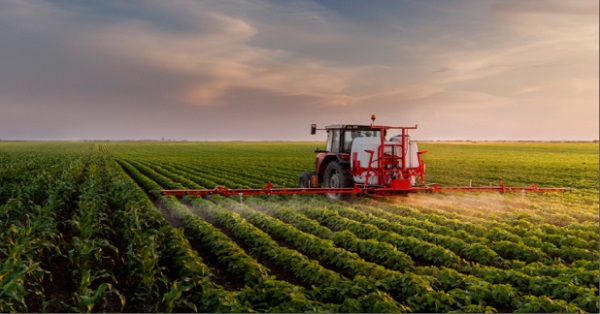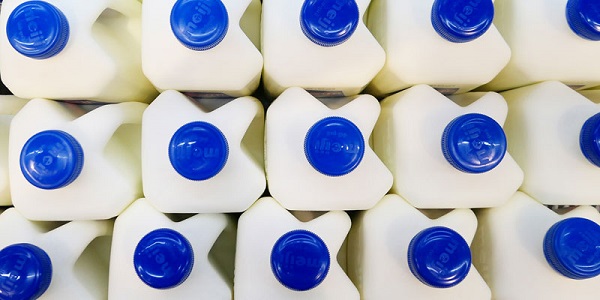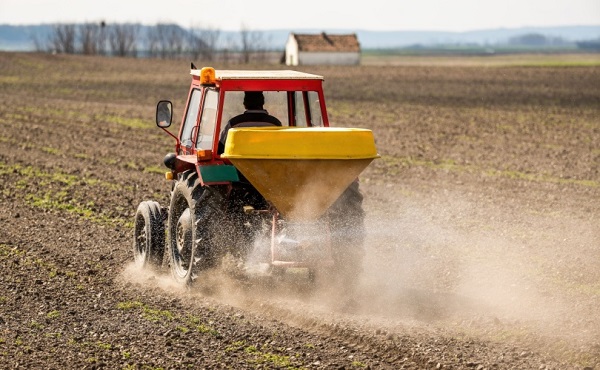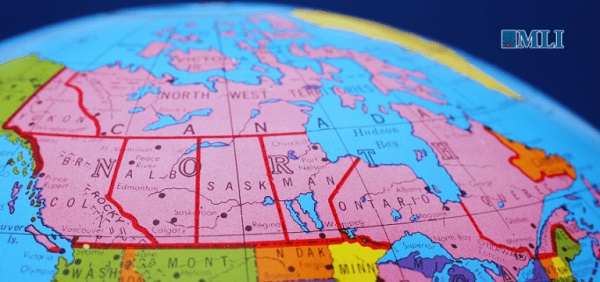Since its appearance in the 1980s, precision agriculture has revolutionized farming, offering innovative solutions to age-old challenges. One of those is Variable rate technology (VRT), which plays a key role in improving efficiency and sustainability in today’s farming methods.
By applying inputs like fertilizers and water in different quantities across the field, VRT helps optimize crop yields and reduce costs. This technology relies on data collection and analysis to create detailed VRA prescription maps, allowing for customized input applications.
With the right equipment and technology, VRT can significantly improve agricultural productivity. Today’s advanced tractors, equipped with built-in terminals and specialized software integrated with a precision agriculture platform, use prescription maps to accurately apply variable rates of water or chemicals based on GPS location and management zones.
Variable Rate Technology In Precision Agriculture
Precision agriculture is a game-changer, moving far beyond traditional farming methods. Often called satellite farming, this approach focuses on crop condition monitoring, measuring, and responding to variability within fields. One of its standout innovations is variable rate application (VRA), which has caught the attention of farmers worldwide for its immense potential.
Why is VRA so important? It goes beyond simply fertilizing, seeding, and applying pesticides. It’s about utilizing technology to apply various expendable materials on and beneath the field automatically.
Farm management software simplifies contemporary farming by combining data and technology to improve farming efficiency, sustainability, and profitability. Precision agriculture platforms consolidate operations, crop health monitoring through satellite imagery, and offer real-time suggestions, enabling farmers to make informed decisions for the best use of resources (through VRA) and increased productivity.
Variable rate application offers numerous advantages for modern agriculture:
- VR fertilizer enhances farming efficiency.
Adjusting rates based on soil health and plant needs helps save resources and increase yields. Research shows this method can lead to higher net income and healthier soil compared to using uniform rates: “The net incomes of VR management zone were 15.5–449.61 USD ha−1 higher than that of traditional spatially uniform rate fertilization.”
- VR irrigation saves water, time, and fuel while reducing machinery wear.
Applying the correct amount of water to different parts of the field based on soil moisture levels and crop requirements reduces wear and tear on irrigation equipment compared to uniform irrigation.
Studies claim: “Variable rate irrigation (VRI) can increase water use efficiency and productivity by applying water based on site‐specific needs.”
- VR seeding increases crop yield by adjusting seeding rates based on soil fertility.
VR seeding adjusts seeding rates based on soil fertility and other factors to optimize plant populations and yields. It is commonly used alongside variable rate fertilization as part of a comprehensive precision agriculture strategy.
Findings show that: “The application of VRS to the seeding of various crops shows positive agro-economic trends, additional yields, and higher economic returns.”
- VR pesticide reduces environmental pollution and improves pesticide efficiency.
VRT helps farmers target pests more accurately and use less pesticide.
Studies have found that “VR management zone reduced the use of nitrogen (N), phosphorus (P), and potassium (K) fertilizers by 22.90–43.95%, 59.11–100%, and 8.21–100%, respectively, and it also increased the use efficiency of N, P, and K by 12.27–28.71, 89.64–176.85, and 5.48–266.89 kg/kg, respectively, without yield loss.”
This demonstrates the ability of variable rate technologies to improve pesticide effectiveness and reduce environmental pollution in agriculture.
Using Various Technological Means For Informed Decisions
Applying different technological tools is essential for implementing variable rate technology in agriculture. This includes smart machinery, fertilizers, seeders, soil sensors, geographic information system (also called GIS), and the Global Navigation Satellite System (GNSS) applications for field mapping. Additionally, having supporting infrastructure, which helps manage and analyze info from different sources, is crucial for successful implementation.
Understanding the location, timing, and methods for seeding, fertilizing, and harvesting is key in remote crop monitoring and precision agriculture, where data plays a vital role in managing resources effectively.
This information is taken from a wide variety of data sources.
- Sensors. Moisture, soil nutrients, compaction, weather stations (humidity, temperature, wind speed)
- Drones and satellite photography. Field hyperspectral imaging.
- GNSS. Event coordinates, also points and times for obtaining time-series data
- Spatio-temporal data sources. Spatio-temporal specific data (trajectories of agricultural machinery, spatiotemporal points, event points, time-series information)
- Maps. Field boundaries, soil type, surface levels)
- AI solutions. Prediction of weather conditions, detection of plant diseases.
However, simply collecting raw data is not sufficient. It is necessary to process this information to extract valuable insights, make informed decisions, and enable automatic alerts and control signals for agricultural equipment. Thus, you must have the capability to:
- Gather data;
- Transform the data to extract valuable insights for precision farming gear;
- Upload the data into agricultural equipment;
- Retrieve real-time data from tractors, seeders, fertilizers, and other machinery.
By following these steps, farmers can make the most of modern technology, optimizing their farming practices and boosting efficiency.
Use Of Satellite Images In Building VRT Maps
Satellite crop monitoring imagery can be used to generate different kinds of VRA maps for various purposes. As nitrogen is one of the most critical elements plants need, building map for its proper application is a major task.
Nitrogen fertilization maps play a crucial role in optimizing the application of water, nitrogen, and crop protection products.
When creating a VRA map for nitrogen fertilizer, you can choose from various indices that provide valuable insights:
- MSAVI is sensitive to uncovered soil and, therefore, is ideal for planning VR fertilizer application in the early stages of growth.
Example: Early in the growing season, a corn farmer uses MSAVI to detect patches of uncovered soil in their field. This helps them apply fertilizer more accurately, ensuring that nutrient-rich areas receive the right amount of input and promoting uniform growth.
- ReCI measures chlorophyll content in leaves, helping to identify field areas with faded and yellowed vegetation that may need additional fertilizer.
Example: A soybean grower notices using ReCI that certain sections of their field have yellowed leaves, indicating possible nutrient deficiencies. They apply additional fertilizer to these areas, restoring plant health and boosting overall yield.
- NDVI indicates biomass accumulation zones and areas with low vegetation that might demand larger amounts of fertilizer.
Example: A cotton producer uses NDVI to map out zones with varying levels of biomass across their field. They adjust their fertilizer application rates, applying more in areas with lower vegetation to support growth and maximize their harvest.
- NDMI is well-suited for VR irrigation by identifying areas that are under water stress.
Example: During a hot summer, a vineyard uses NDMI to pinpoint areas suffering from water stress. They adjust their irrigation system to provide extra water where it’s needed, ensuring the vines remain healthy and productive.
-
- NDRE helps identify stressed or dying vegetation in the middle to late stages of a season, aiding in effective fertilization strategies.
- Example: During the season, a wheat farmer uses NDRE to identify patches of the field where the wheat plants are showing signs of nutrient stress or poor growth. By applying a mid-season nutrient boost specifically to these stressed areas, the farmer improves the overall health and yield potential of the wheat crop.
Field Productivity Maps
Field productivity maps can be created by analyzing satellite images to pinpoint areas with high or low crop yields. By using the NDVI index and advanced machine learning algorithms, different productivity zones can be identified.
Key applications of productivity maps include:
- Potassium and phosphorus fertilization
Historical productivity zones data can help avoid excessive application in areas where these nutrients may have accumulated with time.
Farmers can apply different seed amounts in various productivity zones to either maximize yield or achieve uniform distribution across the field.
Field productivity can be assessed before purchasing or renting land; it helps reduce risk and enhance profitability.
Soil sampling efforts can be focused on key areas indicated by productivity data, rather than relying on generic grid sampling.
As you see, variable rate application (VRA) is a cost-effective method that can save you 10% on planting and cultivation costs based on the characteristics of the soil. To fully benefit from VRA, it’s important to understand the technologies involved, such as sensors, GNSS, earth observation pictures from drones and satellites, and digital maps, which provide crucial data for analysis and implementation. We sincerely hope that you succeed in your farming endeavors with modern technology!
______________
Author Vasyl Cherlinka
Vasyl Cherlinka is a Doctor of Biosciences specializing in pedology (soil science), with 30 years of experience in the field. With a degree in agrochemistry, agronomy and soil science, Dr. Cherlinka has been advising on these issues private sector for many years.
Related















